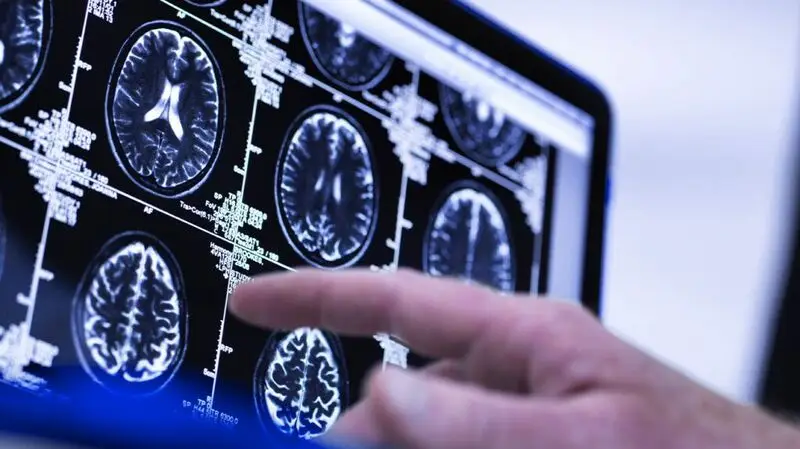
- People age at different rates, partly due to genetics but largely because of lifestyle.
- A person’s rate of aging can indicate how likely they are to develop age-related disorders, such as dementia.
- Now, researchers have developed a method based on a single brain scan in middle age that could predict how fast a person is likely to age.
- They suggest that their method, which can predict the aging rate of both brain and body, may detect who should implement lifestyle changes to reduce their risk of age-related illness.
Some people appear to age more slowly than others. This is partly due to genetics, which studies suggest accounts for around 25% of the variation in longevity but is largely due to lifestyle and the environment.
Modifications in lifestyle, such as following a healthy diet, exercising regularly, getting adequate sleep, not smoking, and not drinking alcohol to excess, can help slow a person’s rate of aging and delay or prevent age-related disorders.
A person’s rate of aging is often referred to as their biological age — how old their cells are — which can vary greatly from their chronological age, or the number of years since their birth. Measuring this can be tricky.
Now, a group of researchers from Duke, Harvard, and the University of Otago, New Zealand, have developed a method of predicting how fast a person will age, based on a single brain scan performed around the age of 45.
In their study, which is published in
“The study developed and validated a new MRI-based biomarker called DunedinPACNI which shows not only a score for brain age, i.e. how old the brain looks, but also shows connections to cognitive decline and other health measures, allowing to perhaps predict how quickly a person ages and how their health will evolve later in life,” Madalina Tivarus, PhD, associate professor of Imaging Sciences and Neuroscience at the Del Monte Institute for Neuroscience at the University of Rochester, not involved in the study, told Medical News Today.
“The idea of using a routine MRI brain scan to do a ‘aging check-up’ is very interesting and exciting,” Tivarus told us.
This study builds on the Dunedin Study, previous research conducted in the same cohort of participants. This study, which followed a group of 1,037 people born in Dunedin, New Zealand in 1972–’73, looked at age-related changes in gene methylation to create an epigenetic clock.
In the Dunedin Study, researchers regularly tested participants’ blood pressure, body mass index (BMI), glucose (blood sugar) and cholesterol levels, lung and kidney function, and even gum recession and tooth decay.
Over almost 20 years, they used the overall pattern of change across these health markers to generate a score for how fast each person was aging.
In the latest study, researchers used a single MRI scan of the brain performed when participants were aged 45, which they correlated with the Dunedin Study aging data. They then developed their DunedinPACNI to estimate rate of aging using only information from the MRI scan.
To evaluate the Dunedin PACNI as a tool for predicting age-related health outcomes, they analyzed it against datasets from the Alzheimer’s Disease Neuroimaging Initiative (ADNI), UK Biobank, and Latin American Brain Health Institute.
They found that their prediction accuracy was in line with more established epigenetic methods.
People with faster DunedinPACNI scores had several indicators of more rapid aging, including:
- worse balance, slower gait, weaker lower and upper body strength, and poorer coordination
- self-reported worse health and more physical limitations
- poorer performance on cognitive function tests
- greater childhood-to-adulthood cognitive decline
- older physical appearance.
Emer MacSweeney, MD, CEO and consultant Neuroradiologist at Re:Cognition Health, who was not involved in this research, highlighted how important brain imaging could be, telling MNT that:
“The researchers observed that individuals with higher DunedinPACNI scores, indicating faster brain aging, were also more likely to experience Health deterioration in other organ systems, such as cardiovascular and respiratory Health. The fact that brain imaging can reflect systemic aging suggests the brain may serve as a biomarker for overall biological age, offering a non-invasive, accessible measure of aging processes throughout the body.”
Tivarus enthused that:
“This study is exciting because it shows that MRI scans might be used not just to detect disease, but also to track how the brain is aging long before problems begin. However, it’s still early days. While promising, DunedinPACNI still needs to be tested more widely in larger and more diverse populations across different ages, ethnicities, and health backgrounds. It did perform well across multiple large datasets, but more global validation is needed.”
The researchers compared the DunedinPACNI with measures of hippocampal and ventricular volume, which are commonly used MRI-based measures of brain aging, using UK Biobank and ADNI participants.
They found that faster DunedinPACNI was more consistently and strongly associated with poor cognition, poor Health, frailty, and risk of dementia, disease and mortality than either of these measures.
Tivarus was impressed by the study structure.
“The study methodology has some important strengths such as it is using a robust, decades-long longitudinal dataset, uses sound statistical methods, and has been validated extensively using imaging data from other large studies,” she explained.
However, she also pointed out that there were “some limitations, such as the specific population data used to train the model (mostly European ancestry, from a specific geographical location), its performance in younger or pediatric populations is untested, [and] it infers dynamic processes from one static image (one MRI snapshot).”
“While I don’t think it is ready for clinical use, DunedinPACNI appears to be a promising imaging biomarker of biological aging,” Tivarus told us.
As people are living longer, but not necessarily healthier, lives, the ability to predict who is more likely to develop dementia or other age-related illness is becoming increasingly important.
The researchers hope that their tool might eventually help clinicians do that well before symptoms, allowing interventions to reduce the risk of conditions developing.
“Identifying accelerated aging in midlife provides a critical window of opportunity for intervention. Knowing one’s biological age, as distinct from chronological age, could motivate individuals to adopt healthier habits, such as improved diet, increased physical activity or better sleep. By highlighting risk decades in advance, the tool empowers people to take proactive steps that may slow or even reverse aspects of biological aging.”
– Emer MacSweeney, MD





